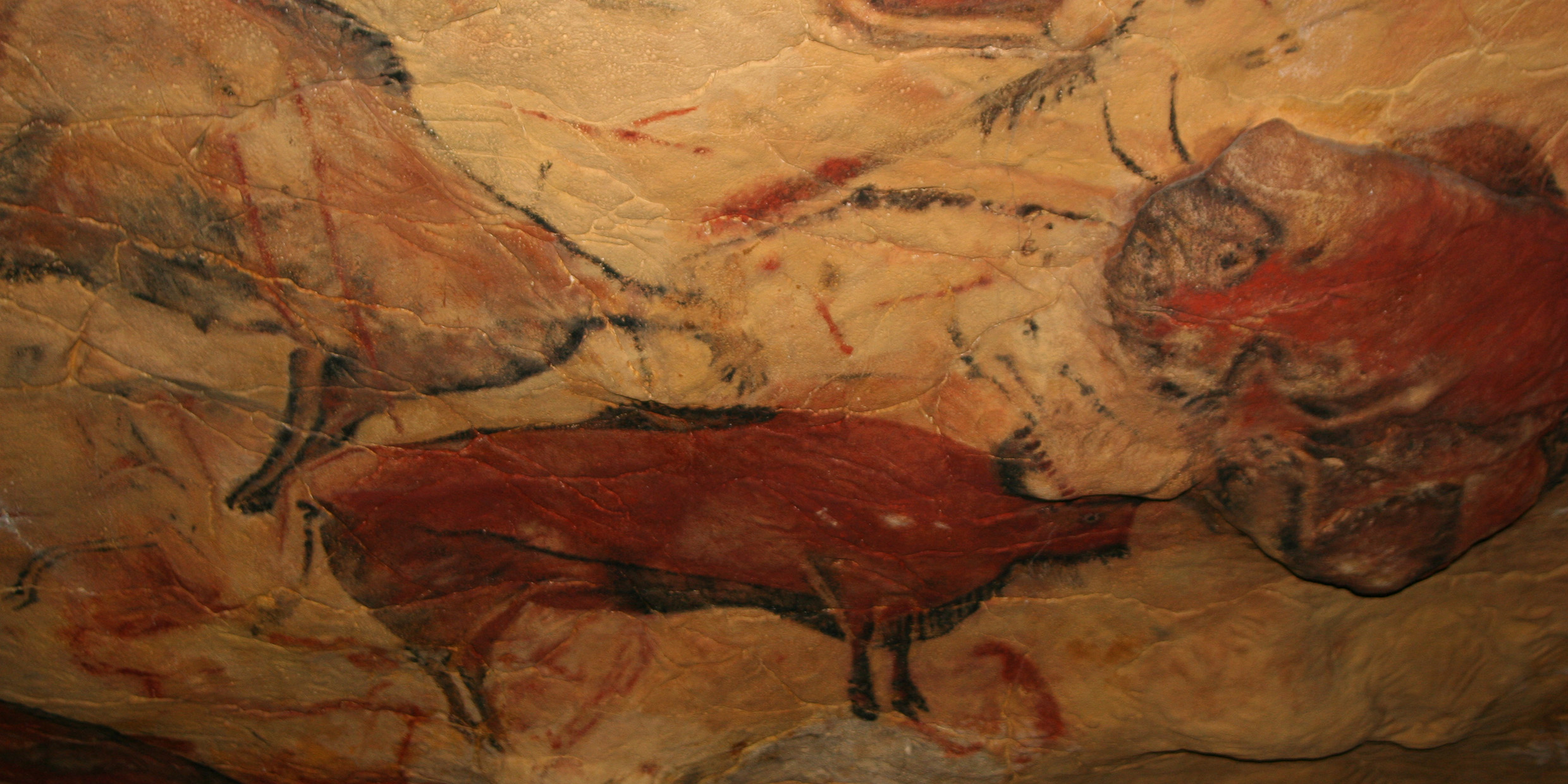Originally published 27 October 1986
It was the view of cultural critic Lewis Mumford that “modern man has formed a curiously distorted picture of himself, by interpreting his early history in terms of his present interests in making machines and conquering nature.”
And it is true that when we think of the origins of human culture what most often comes to mind are the stone tools that so commonly accompany human bones in the strata of the past. The sharp edge, the hacker, the piercing point, the barb, the weighted club: These are the objects that — willy-nilly — we have let define our image of our early selves.
The image is false. Our Cro-Magnon ancestors were not crude barbarians intent on bashing their environment into submission. Certainly, they had need for clubs and blades. Like us, they had to put food on the table. And there were times when protection of kith and kin must have required knocking a few heads. But we should not underestimate their ability to touch with tenderness, to play, to value beauty, to count the stars.
The exhibit of Ice Age artifacts that opened this past week [October 1986] at the American Museum of Natural History in New York can be a useful reminder that history has been more than a technological reinforcement of the arm and fist. The objects here collected from the museums of Europe affirm that Cro-Magnon humans also had eyes, ears, tongue and lips, fingertips and organs of sex, and that these gave rise to feelings that found expression in sensitive works of art.
A creative urge
The exhibit is called “Dark Caves, Bright Visions: Life in Ice Age Europe,” and offers the largest collection of original Ice Age artifacts ever assembled in the United States. Many of the items appear to have no other purpose than the expression of a creative urge. There are engravings of animals on stone and bone, graceful statuettes (including the famous Venus of Lespugue), and elegant jewelry. There are practical objects, like lamps and spear-throwers, but even these are handsomely crafted and decorated.
Visitors to the exhibit will be allowed to look, but not touch. Too bad. Seeing these gorgeous objects in a museum case or represented on the printed page leaves one with the desire to hold them, to turn them, to trace the contours with the tip of the finger, to feel the polished surfaces, to measure the heft and balance in the palm of the hand. Above all else, these are sensuous objects — and sensual. They speak of pleasure in light and shadow, in movement, in tastes and smells, in the thrill of sex. The people who made these things were not an early, cruder version of ourselves — they were ourselves, and the things they made bear witness to the best within us.
The understanding that our Cro-Magnon ancestors were something other than hulking brutes did not come easy. It began one day in 1879 when the young daughter of the Spanish nobleman and amateur archeologist, Don Marcelino de Sautuola, accompanied her father on the reconnaissance of a cave on his summer estate at a place called Altamira on the northern coast of Spain. While here father dug into the floor of the cave searching for artifacts, the girl wandered into a nearby low-ceilinged chamber. In the flickering light of her lantern she saw a herd of red animals streaming across the roof of the cavern. Running back to her father, she shouted the news of her astonishing discovery. “Toros! Toros!,” she cried, but what she had seen were bison, not bulls.
The scientific community greeted the Don’s announcement of Ice Age art with almost total skepticism. Few people of that time were willing to accept the graceful, brilliantly executed drawings of bison, horses, deer, and wild boars as the work of prehistoric “cave men.” The drawings, concluded the experts, were probably no more than 20 years old, perhaps forged by the Don himself.
Further discoveries
By the end of the century, similar examples of Ice Age art had been discovered at other sites in France and northern Spain, and opinion was beginning to change. But still, many experts refused to grant a very high level of sophistication to the Cro-Magnons. When in the 1960s Alexander Marshack argued that dots and scratches on certain Ice Age artifacts represented an accounting of the phases of the moon (evidencing abstract notions of numbering and time), his claim too was met with skepticism.
I once went with my own children to the cave at Altamira where little Maria de Sautuola found the cavorting animals. One glance was enough to recognize the workings of a mind no less subtle than our own. With simple lines and a few colors, the Ice Age artists had captured the dynamism and the beauty of the animals. In my children’s eyes I could see the same excitement that thrilled the little Spanish girl a century ago.
Life on the edge of the glaciers was almost certainly hard. Out of that hardness came bright visions, and the bright beginnings of human culture. No “grunt-grunt, ugga-bugga” here. No slash-slash, chop-chop. The crafters of the Ice Age artifacts on display in New York communicated sensitive feelings in a remarkably sensitive way.



